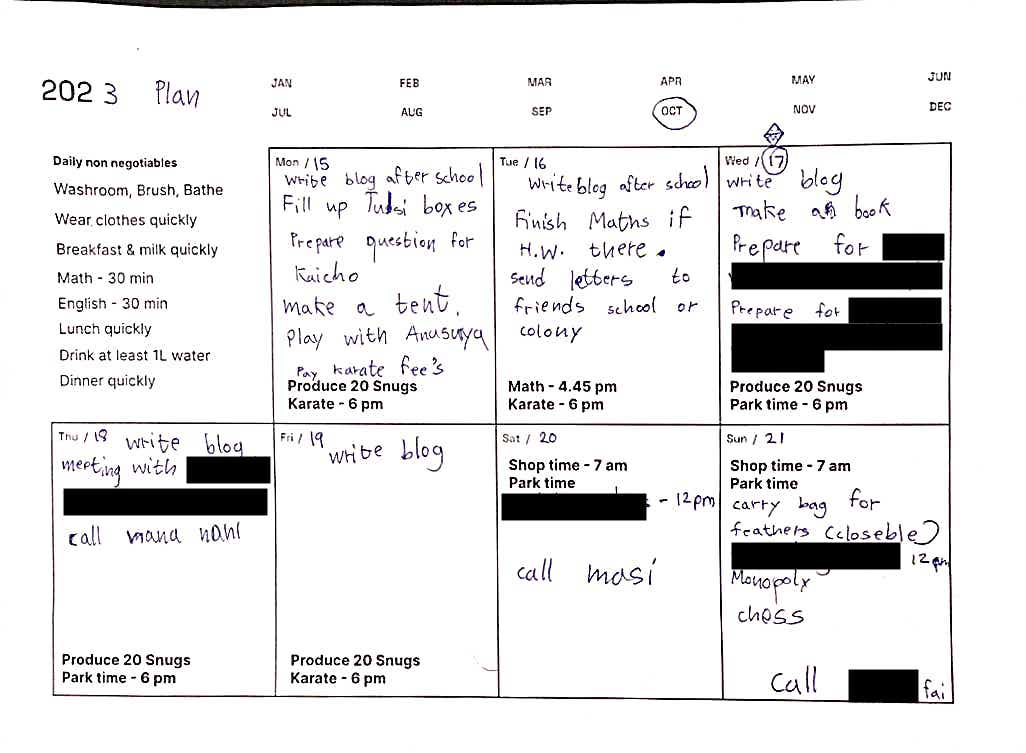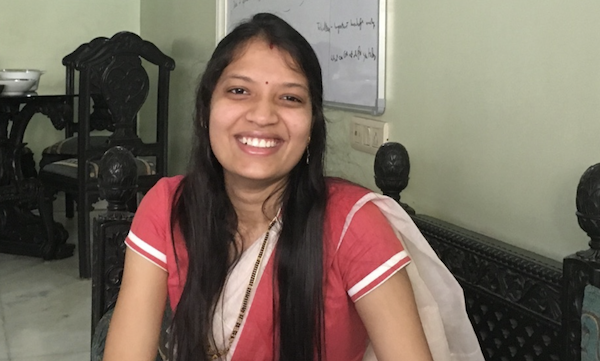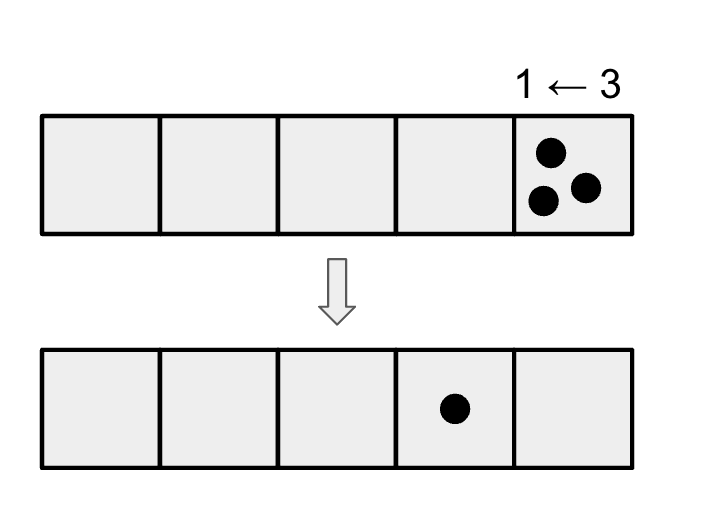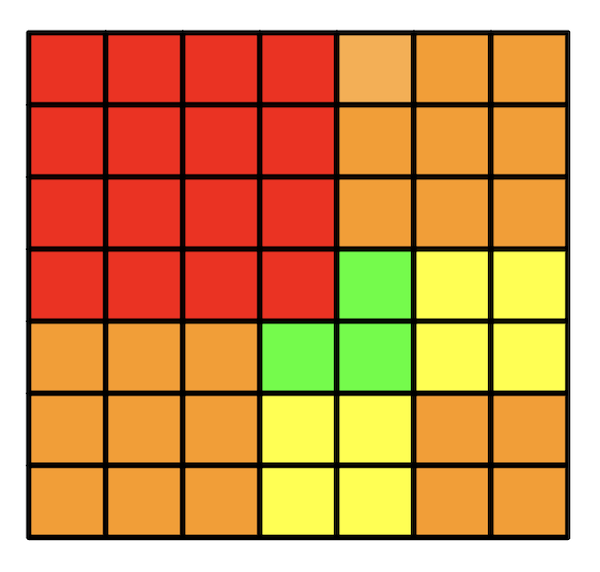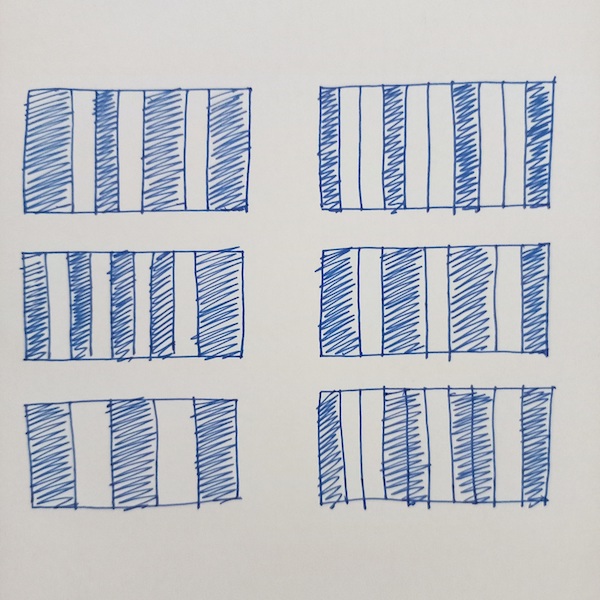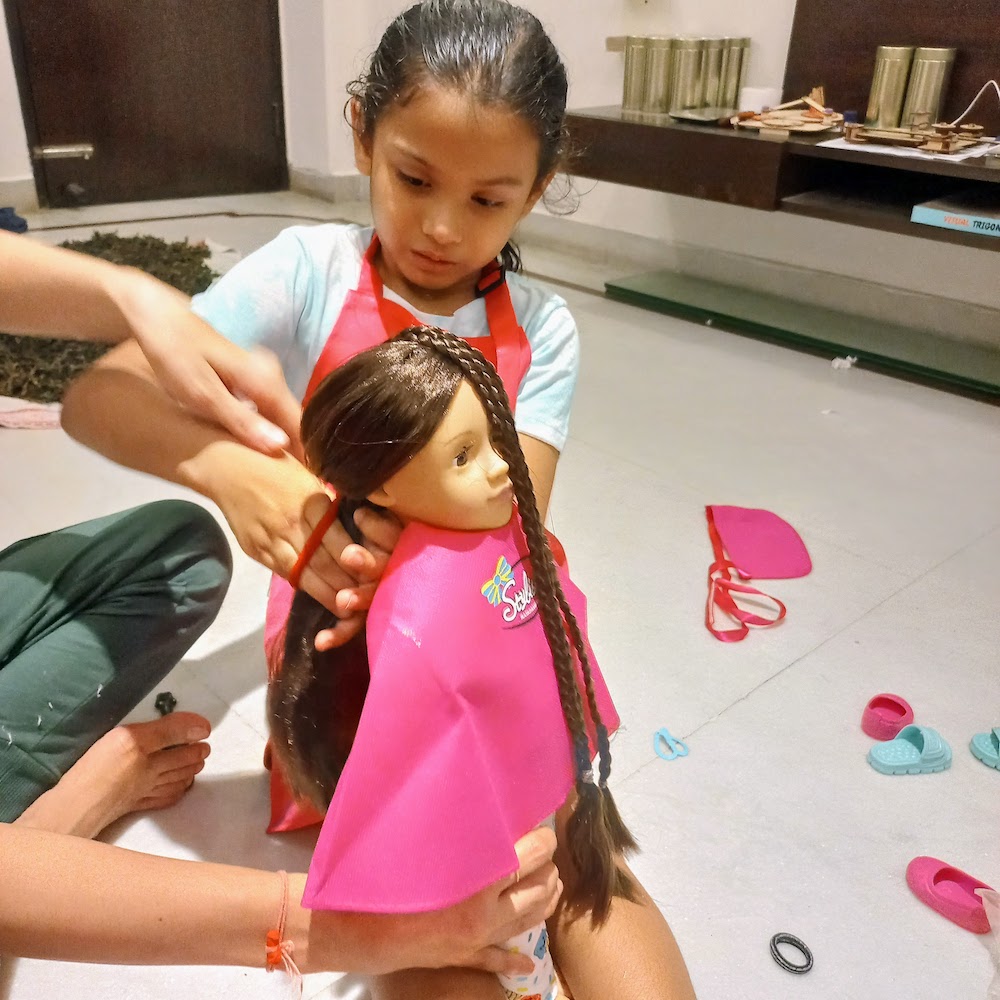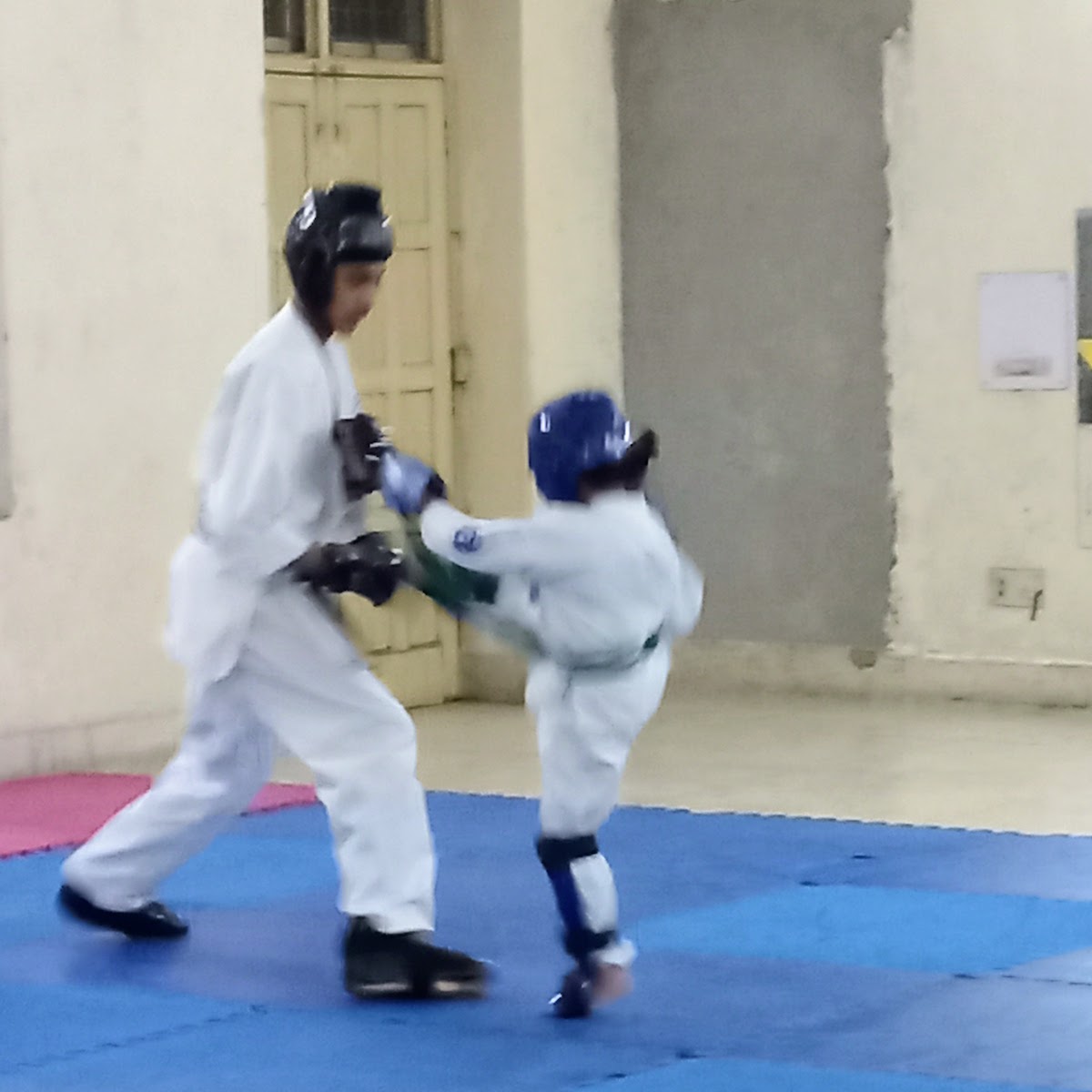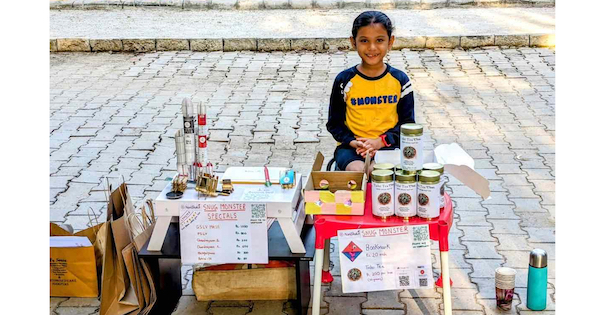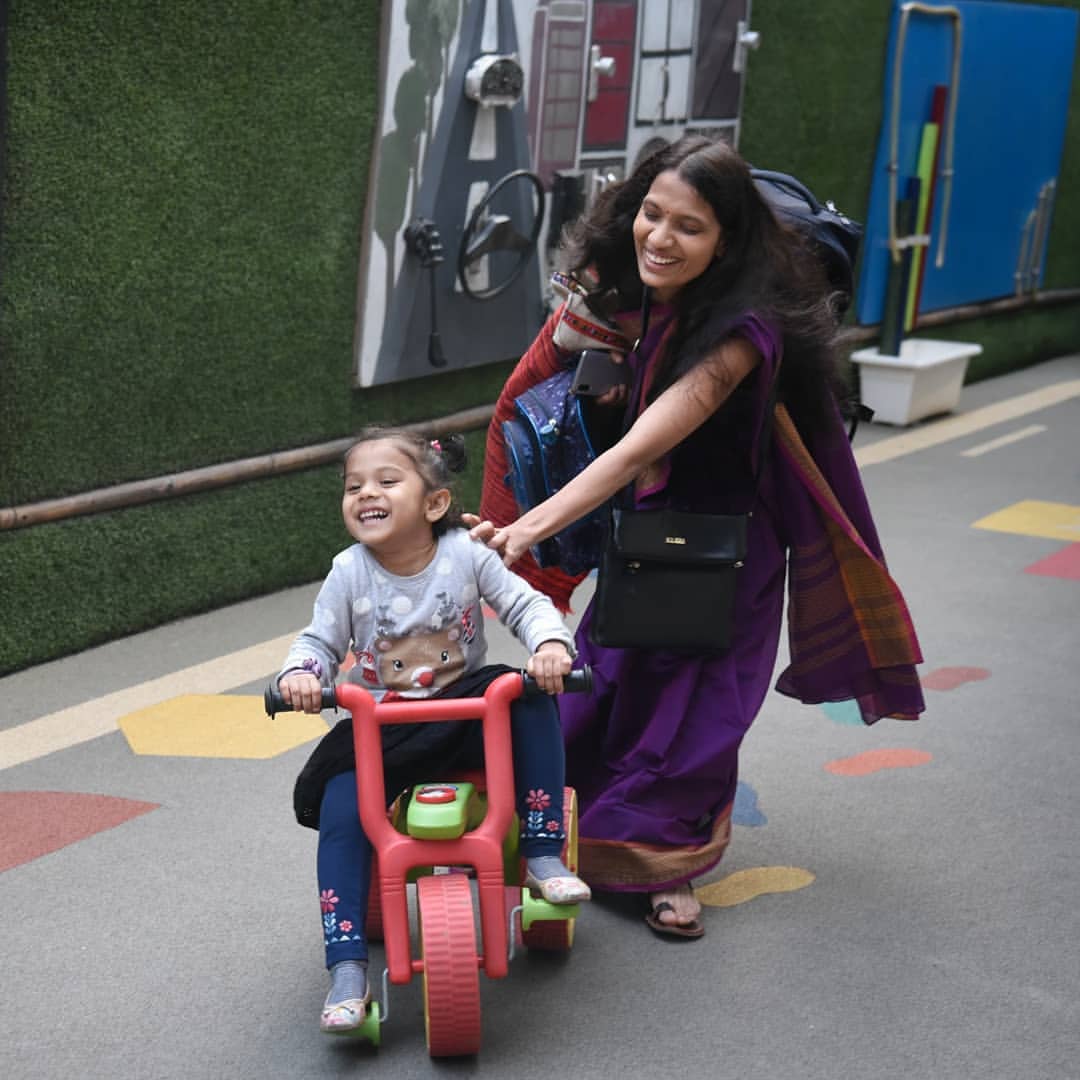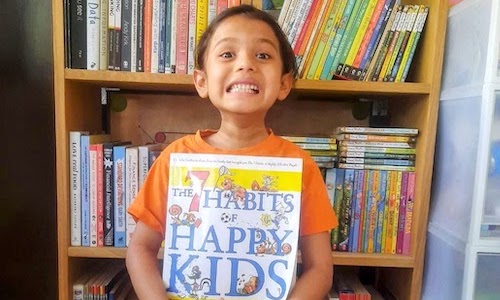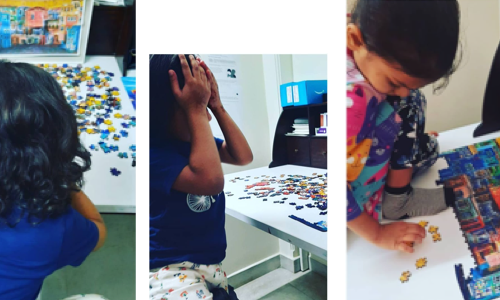NariShakti is a platform for Indian-origin women professionals to empower each other, achieve work-life balance, and give back to their communities. We promote women’s economic independence, growth, and development by sharing insights, experiences, and resources.
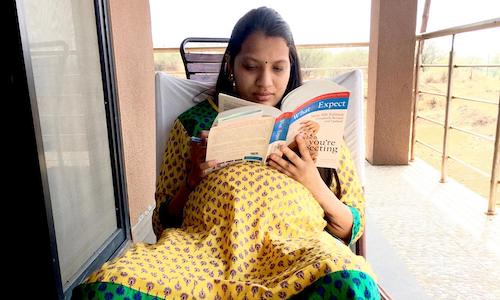

“For the past 3 years our (now) 12yr old son, Vidur, has been setting up a game stall at our society Diwali mela.
While his objective was to have fun, I had a selfish motive.
To teach him about money.
This year he earned 12K in profit.
And he can’t believe it!
1st year lesson: Sales
3 years back I wished for him to learn sales.
How to drive conversions?
What to write on the cardboard?
How to select the prizes?
How to price?
He ran a “break the can pyramid with 3 balls” game.
Priced it at Rs. 10 for 3 balls.
Made a sale of Rs. 4,000.
Had no idea the cost of the prizes he gave away, or something called profit.
But understood that he could have charged more.
Classic startup haha!
2nd year lesson: Costs
Last year, I wished for him to learn costs.
Fixed costs (stall cost, game cost etc) and variable costs (prizes).
He had a budget to work with.
He didn’t like that one bit.
“Why can’t we give away cool prizes?”
“Because they cost money, Vidur. And you only have so much to spend.”
He ran the same game.
Made a sale of Rs. 8,500.
Spent Rs. 5,000 in prizes and Rs. 3,000 in fixed costs.
He thought he made Rs. 8,500.
Cute! :))
3rd year lesson: Profits
This year, I wished for him to learn how to make money.
And I saw a different Vidur at work!
He decided on a new game.
Players had to throw table-tennis balls into 10 cups arranged as a cone, each with a score 1-10.
You total the score and basis that win prizes.
I asked him how much he wanted to make, in profit percentage?
He said atleast 75%
Wow!
I said, ok – let’s play excel excel :)))
We made an excel sheet.
Built the numbers.
I could see his mind work.
Sales:
His game pitch was “Earn Rs. 15,000”
How?
Score more than 30 points in 3 or 4 tries and pick any of the following prizes – which included a Marshall speaker for Rs. 15,000 (he didn’t buy it – we already had one).
He priced 3 tries for Rs. 20, 4 tries for Rs. 40.
Costs:
He wanted most people to walk away with a prize, however small.
So he set 5 slabs
1-5 points: Lollipop (worth Rs. 5)
6-10 points: Frooti (worth Rs. 10)
11-20 points: Frooti + Oreo (worth Rs. 20)
21-30 points: Coke + Oreo + Kitkat (worth Rs. 30)
30+ points: Pick from the grand prizes
He went about buying all of these, on a returnable basis from the local shop (very smart of him to consider returnable).
Invested 2,700 to do so.
Plus 2,000 for the stall.
Plus 500 for misc setup.
Profits:
He was on a roll that day.
I was the cashier handling the money.
He was the one selling and making people play.
Enticing them to go for 4 tries (for Rs. 40).
Celebrating each ball dropping into a cup.
Mid-way he realized the game was harder than he thought it would be.
So he encouraged the same people to play again, because it is a skill game eventually.
It was wonderful to see him in action.
End result:
Sales: Rs. 16,600 (40% went for 4 tries!)
Costs:
- Rs. 2,500 fixed
- Rs. 2,200 prizes
Profit: Rs. 11,900
What did he do?
Kept 1,900 with himself and asked me to invest 10K
How did he feel?
On top of the world.
He can’t believe he did it.
While he gets a fair bit of money on his birthday and other family events, this is the most he has made on his own.
And I don’t think anything else will come close to making this money feel sweeter!
PS 1:
He has been investing nearly all the money he has got till date, through me.
Has invested 1.05L so far, which has reached 1.23L at an XIRR of 24%
PS2:
This was the excel sheet we made :))
https://t.co/B7ipKKvMwi
Source: https://twitter.com/warikoo/status/1723989015723167848
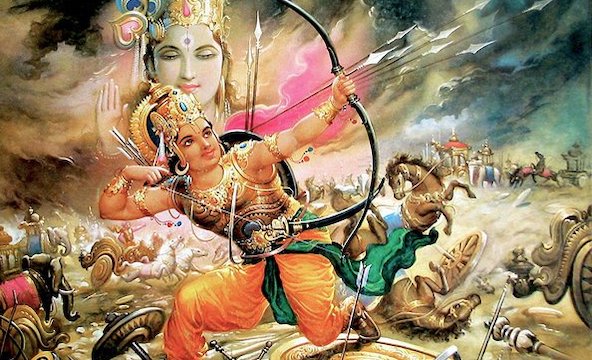
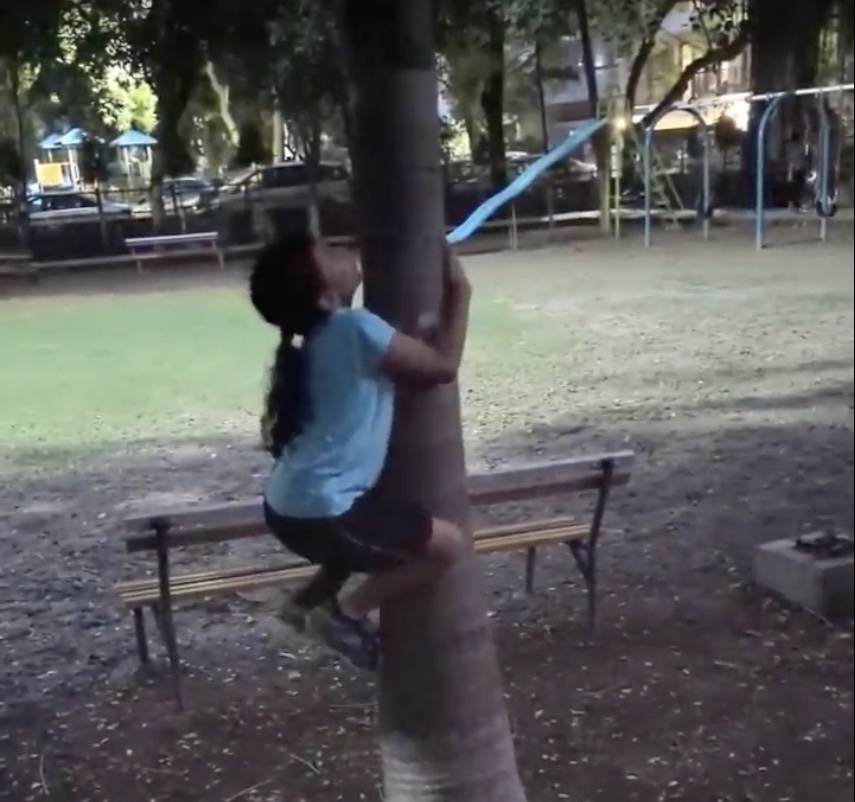
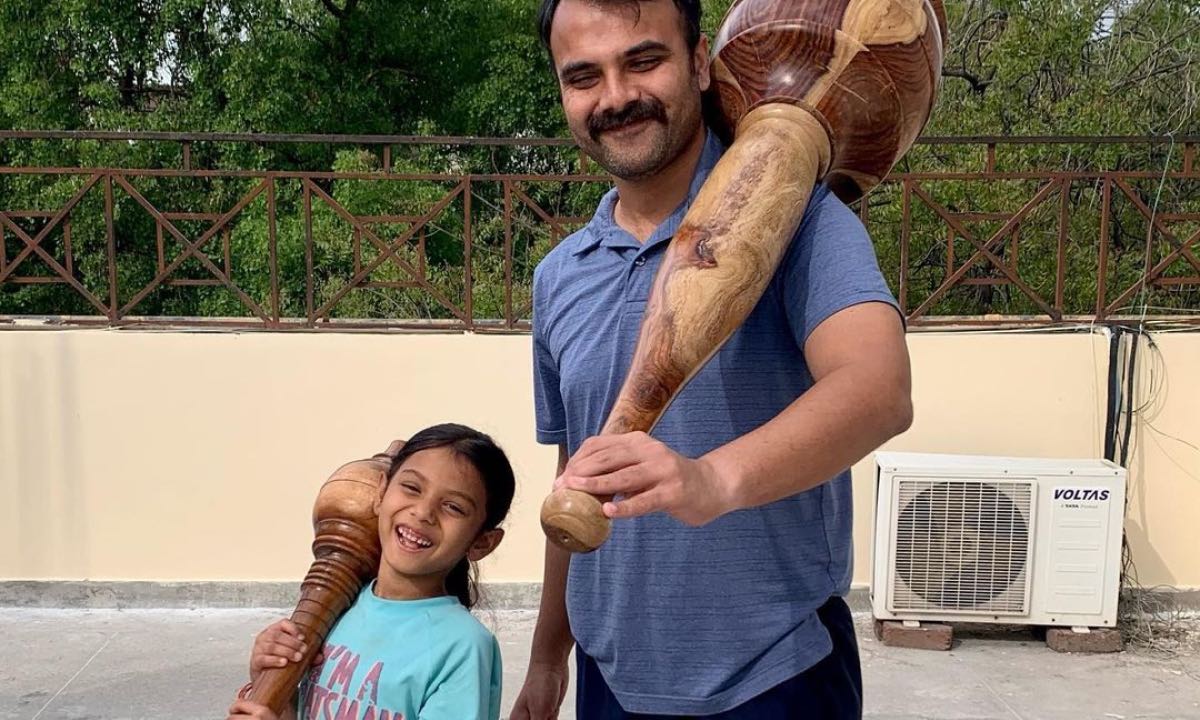
Children are always bursting with questions. But, let’s be real, we didn’t always have the answers or the time to spare. So, we introduced Sabi to ChatGPT+. Here’s how it played out:
- Safety first. We kicked off chats with: “Hi, I’m Sabi. I’m a seven-year-old in second grade. Can we talk?” This let ChatGPT know a young mind was on the other end.
- Quenching curiosity. Sabi dived into everything from “How did the universe begin?” to “How do you play with 1-year-old babies?” Sure, some replies were cliche, but to a seven-year-old, it’s fresh info.
- Intellectually active. Instead of just zoning out in front of the TV, she posed questions, read back, and thought of what to ask next.
- Better screen time. Suddenly, those hours in front of a screen weren’t just passive; they were educational.
- Typing skills. Introducing her to a laptop for this meant she got a head start on keyboard skills.
